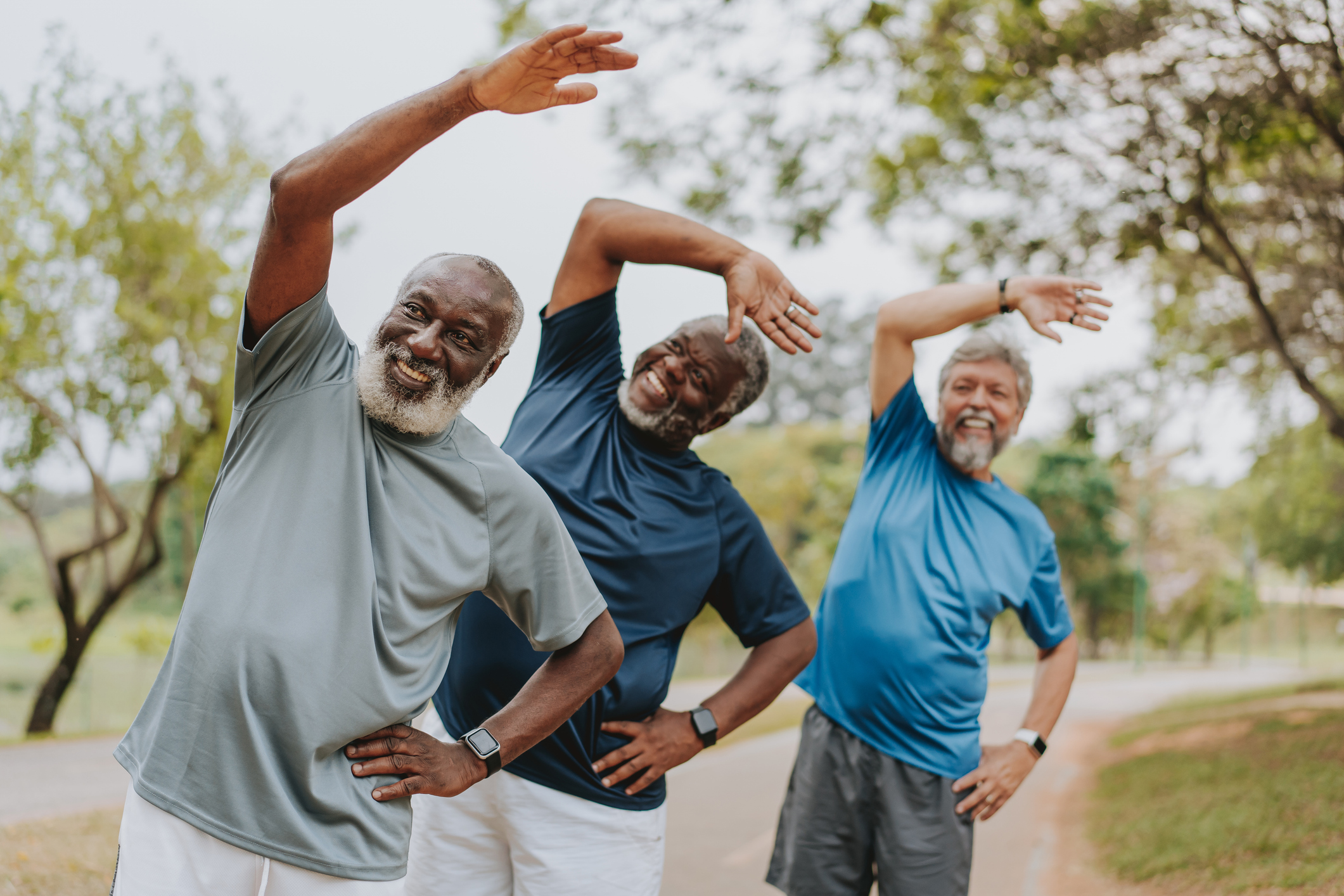Get Easy Health Digest™ in your inbox and don’t miss a thing when you subscribe today. Plus, get the free bonus report, Mother Nature’s Tips, Tricks and Remedies for Cholesterol, Blood Pressure & Blood Sugar as my way of saying welcome to the community!
Partner training for powerful chest, shoulders, arms and back

Training by yourself can be difficult. It takes motivation and a lot of the time it takes equipment. Having a partner to train or exercise with helps with motivation, a positive outcome … and you can replace many of the weights with body pressure from your partner.
In today’s video article Alan Orr of Gym 101 in New Zealand will show you two simple yet very effective ways of toning and strengthening your chest, arms, shoulders and back with a partner.
Partner training position
Stand facing your partner, extend your arms, palms touching like a high-five. Stand with one leg in front of the other, like in a short lunge or extended walking step. Be sure to keep your elbows down and not pointing to the sides, so the load placed on the arms during this exercise will remain in the arm and not displace to the chest. This will also allow you to use more of your lats and for the exercise through variant tension.
Isometric and Isotonic training
Isometric exercise is one wherein you hold a load or tension at a single point, unmoving, for a period of time. This happens throughout the day when you lift a heavy box or a child and hold them up at a stationary height. When strength training, you could hold a barbell or dumbbells in a static position and hold for a period of time. The longer the hold the more fatigued your muscles get holding it in position, and then the heavier the weight seems to become. So even a five pound dumbbell can feel as if 30 pounds after a few minutes of holding it in place.
Isotonic training is like isometric except the load is moved through the range of motion of the muscles holding it. It’s like lifting up the box from one height and loving it to another height. This is common in weight training wherein the barbell will be pressed from the chest to full arm extension or the dumbbells will be curled from extended arm through flexed arm and back down.
In both isometric and isotonic training, a specific load is placed on the muscle(s) which helps strengthen them while also improving bone density. One holds the weight in a fixed location and the other moves the weight over the range of motion.
Isometric Arm Press
First is Isometric Tension, where you and your partner will press your hands into each other’s, as if trying to push the other person away. You will load your body weight for stability, and then press your hand into your partner’s hand, which is doing the same to you. Your opposite forces meet in the middle and cause a force to be placed against your arm and upper body muscles, which helps to strengthen and tone them.
Press and hold the position for five seconds or longer and do 10 repetitions before changing arms. The key is to work together, and not have one partner try to “push over” or “beat” the other.
Isotonic Arm Press
Now move on to isotonic tension with your partner. For this exercise, one partner applied constant forward pressure while the other create constant resistance, but allows them to move through their range of motion to extend their arm. Then the roles reverse, taking turns holding tension and releasing slowly. Do this for about 20-30 seconds at a time and then change arms and repeat.
These two exercises do not require equipment and working with a partner can be fun and motivating, as well as strengthening.












